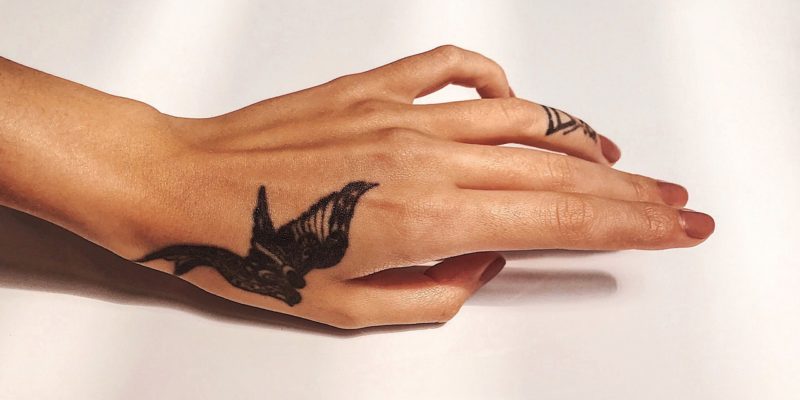Hand Tattoo Healing: Information on Finger and Hand Tattoo Aftercare
One of my favorite things about getting tattooed is that it never really feels the same way twice. Different parts of the body (and different people as a whole) have differing levels of pain tolerance, and the healing process can go so many different ways depending on where a tattoo is located, too. Hand tattoos are a perfect example of this.
As Los Angeles tattoo artist Johnny Dagger will tell you, the process of healing hand tattoos can be vastly different from ones on other areas of the body. “Depending on the exact area of the hands, it can heal completely different,” he explains to Allure. “The best bet for hand tattoos are the top of the fingers and top of hands — those two areas will heal well and will not fade quickly. When you tattoo other parts of the hands, it can definitely be a roll of the dice to see if the tattoo stays or not.” In other words, some parts of the hands have lots of joints and creases so they can bend and move properly — those will be more prone to patchiness and fading.
The palm, side of the hand, or in-between the fingers are good examples of that, New York City tattoo artist Ron Mor explains further. “I’ve found that this type of skin doesn’t hold the ink as well in the long or short term,” he says. “It might look good when freshly tattooed but… much of the tattoo can ‘fall out’ or disappear [or] there can be a shadowy appearance to the tattoo. There’s also a chance that it could fade much quicker over the years compared to a tattoo on a bicep or thigh, for example.”
Think about it this way: If you were painting a canvas that had a bunch of big, moving crinkles, it’d be hard to effectively get paint in them. And that’s only the half of what makes hand tattoos so different. Compared to the rest of our bodies, hands get a lot more daily wear and tear because we use them so much and they’re almost always exposed to the elements.
“Movement of the hand over decades causes exaggerated skin lines over joints, and laxity over the back of the hand increases as we lose fat volume and underlying tendons and vessels become more prominent,” explains San Diego board-certified dermatologist Melanie Palm. “All of these can affect how the tattoo ages and appears over hand’s underlying anatomical structures.”

